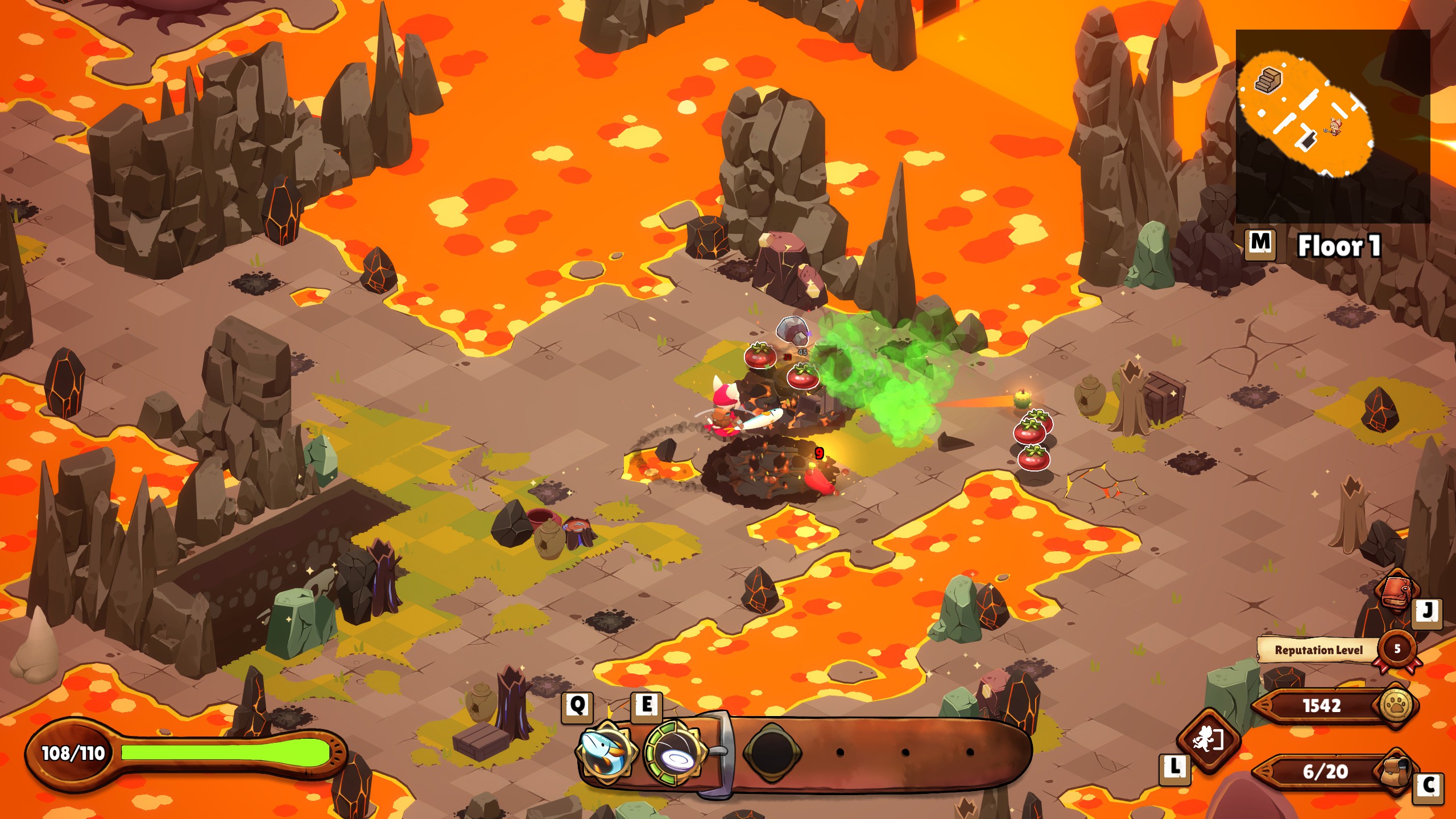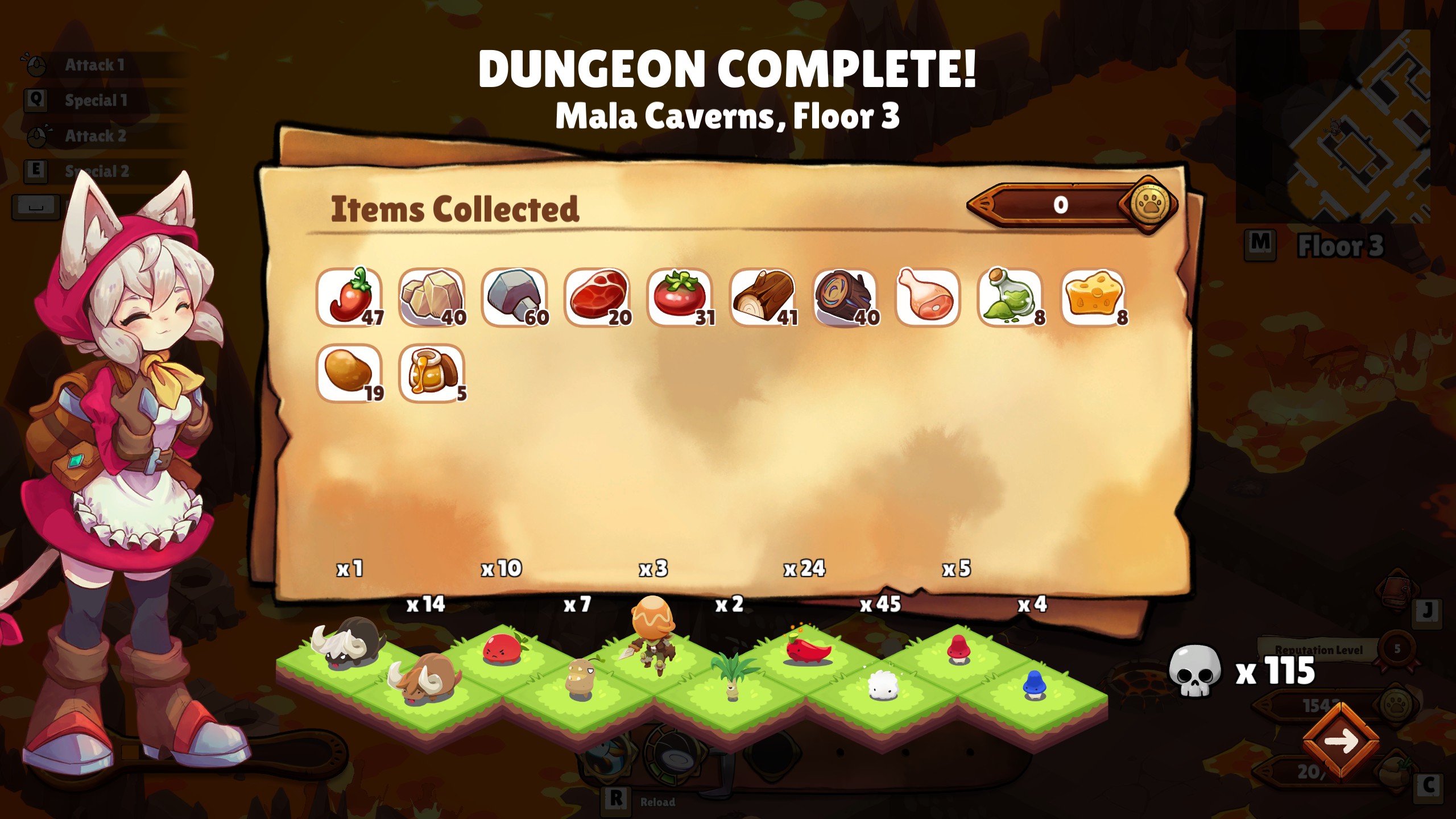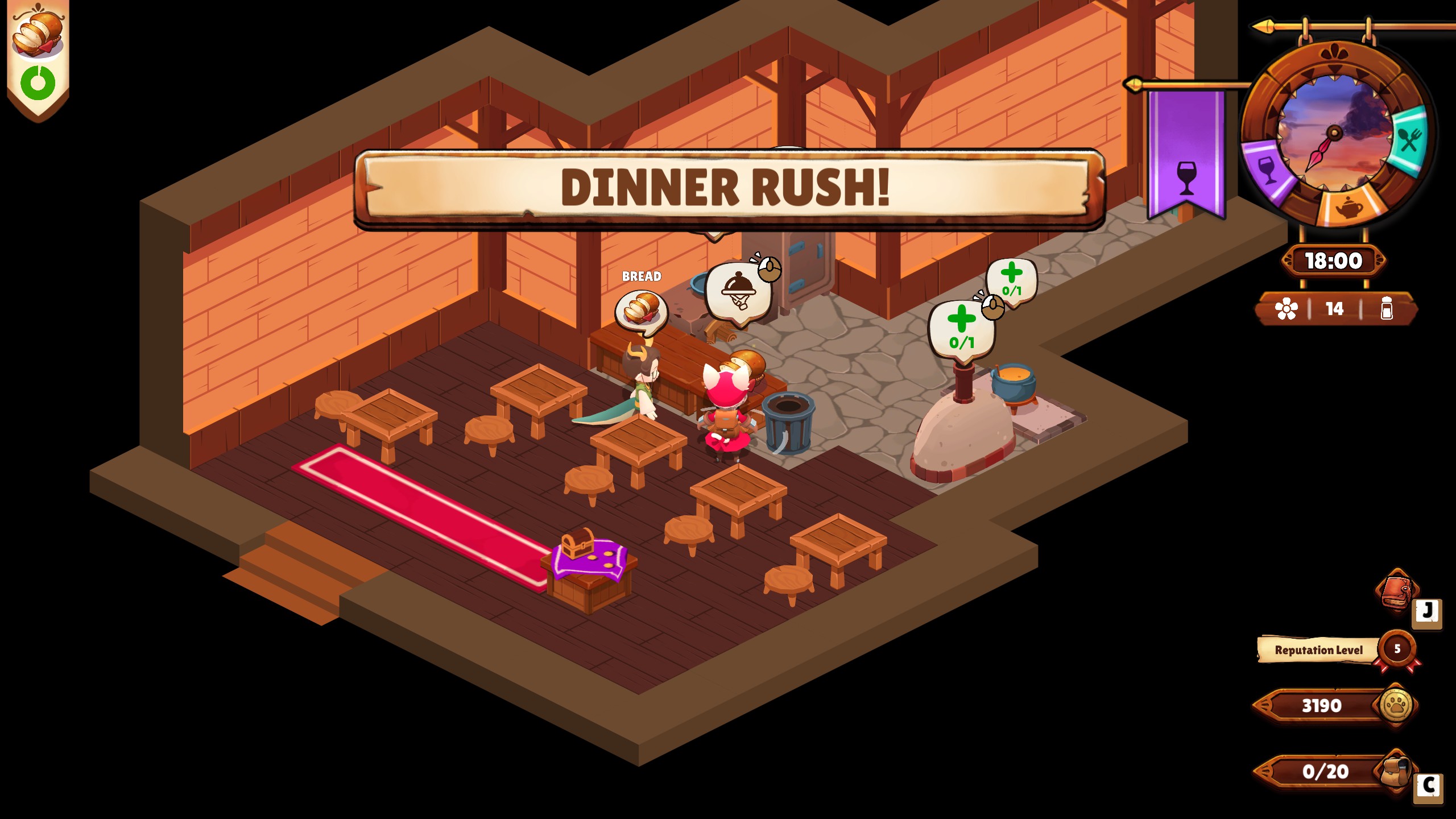
Everything is better with cute anime girls and that includes the roguelite genre, thankfully Cuisineer is here to pick up the slack.
The latest game from BattleBrew Productions, Cuisineer takes the cutesy style they’re known for from their past BattleSky projects and steers it into an original and light-hearted game.
In the town of Paell you can live out wild fantasies like owning your own business, making friends, and slaying more than a few monsters in pursuit of gastronomic perfection. But in such a saturated genre does Cuisineer really stand out?
Cuisineer
Developer: BattleBrew Productions
Publisher: Marvelous Europe, XSEED Games
Platforms: Windows PC (Reviewed)
Release Date: November 9, 2023
Price: $24.99 USD

Players take on the role of Pom, a young adventurer who returns home to Paell after learning her parents went on a global vacation. However to fund their world trip they sold just about everything in the restaurant and also gone into debt! Now Pom will have to gather ingredients, buy new furniture, and revitalize her parents’ restaurant, capitalism ho! (Wait, wrong game.)
The first thing that stands out is the game’s cutesy anime art style and character design, from Pom herself to the random NPCs there’s an illustrated portrait for nearly every character. The tone of the game is light and silly and that’s reflected in the enemies which range from little rice grain soldiers to sentient potatoes that launch chips at you.
BattleBrew Productions has a great art direction and managed to nail that feel of a mid 2000s Japanese indie game, which is hopefully what they were going for. The game isn’t too graphically intensive and can probably run well even on low-spec rigs.

Character design is great, especially Pom herself and the boba tea vendors, but all around there’s something for everyone. BattleBrew also went all out with the foot art, you get an amazing splash image of every new recipe you learn and can see every detail from the runny yolks to the crispy bacon and well-seasoned greens.
The actual gameplay is an isometric roguelike beat’em up which is a mouthful. Basically you adventure into regions to collect ingredients and building materials for furniture and renovations. Fighting is a little repetitive but gets better later. Enemies can be reliably hit-stunned so use that to your advantage and try not to get surrounded.
Bosses are a little more engaging since they don’t experience hit-stun in the same way that run of the mill enemies do, their telegraphed attacks and patterns are way more fun to fight with than swarms of dust bunnies or cows that ram you at the speed of light. Sometimes the basic enemy attacks get so overwhelming I feel like I’m playing Vampire Survivors; so you’re kind of compelled to stop and fight almost every enemy lest they become a problem later.

In true roguelike fashion, you’ll find and upgrade weapons of varying types. These weapons come with an assortment of perks and with the right combo you can find something that suits your playstyle. My favorite is this passive that shoots a durian bomb that spews poison while I do my normal attacks, it’s a bit of extra damage and extends a bit further than my attack range, giving me a bit of breathing room by poisoning and possibly hit-stunning weaker enemies.
You can also buy bobas which are added to your belt, these offer healing and buffs in a pinch. They’re worth buying in hindsight, but I’m kind of a miser with my in-game money so I didn’t take any on most of my runs into the dungeons. I also didn’t need them, knowing how to time hits and dodge telegraphed attacks will carry you through the early game with starting equipment.
The most annoying part is the inventory management. The 10 item slot limit at the start feels needlessly restrictive but thankfully you can upgrade it with gold. Flour, chicken, and eggs will clog most of your inventory early on since the game loves to throw swarms of those enemies at you. Head to the south part of town and spend your first thousand gold buying the first two upgrades to your bag, you can thank me later.

Speaking of inventory management, it’s unclear at a glance what ingredients are the most desirable without going into a menu to look at dish prices. Rice soldiers are an annoying early game enemy and basic rice dishes only sell for 14 gold, meanwhile chicken sells for more and is easier to gather.
The restaurant sections are also a bit grindy and inconsistent. Few things are as disappointing as someone coming in and asking for a basic rice or flour dish; especially when my fridge is stocked with fresh (and profitable) beef and pork. Like the combat, the early part of the game is the worst. Cooking at the start is boring and largely standing in one spot for your entire shift. Things spice up a bit with new customer types where you need to deliver dishes, but it takes a couple in-game weeks to get there (or at least it did for me).
You learn recipes through side quests, but you won’t even use any of them until you get some better cookware.

There’s a fun game deep inside of Cuisineer, but like the boiled eggs you serve in the restaurant, you need to get through the shell. That shell is the first few hours you spend paying your first debt, upgrading the restaurant a few times, and finally getting into more engaging boss fights and interactive restaurant shifts. It’s a grind, and will take a few hours, but if you’re having fun who cares if the game is a bit long?
Ultimately, Cuisineer is a grindy game that will appeal to casual roguelike fans, weebs, or anyone looking for a grindy game to lose dozens of hours into. That same grind will likely alienate a handful of you, but if this kind of isometric combat is your thing then it’s worth pushing through.
Cuisineer was reviewed on PC using a code provided by Marvelous. Additional information about Niche Gamer’s review/ethics policy can be found here. Cuisineer is now available for Windows PC (via Steam).